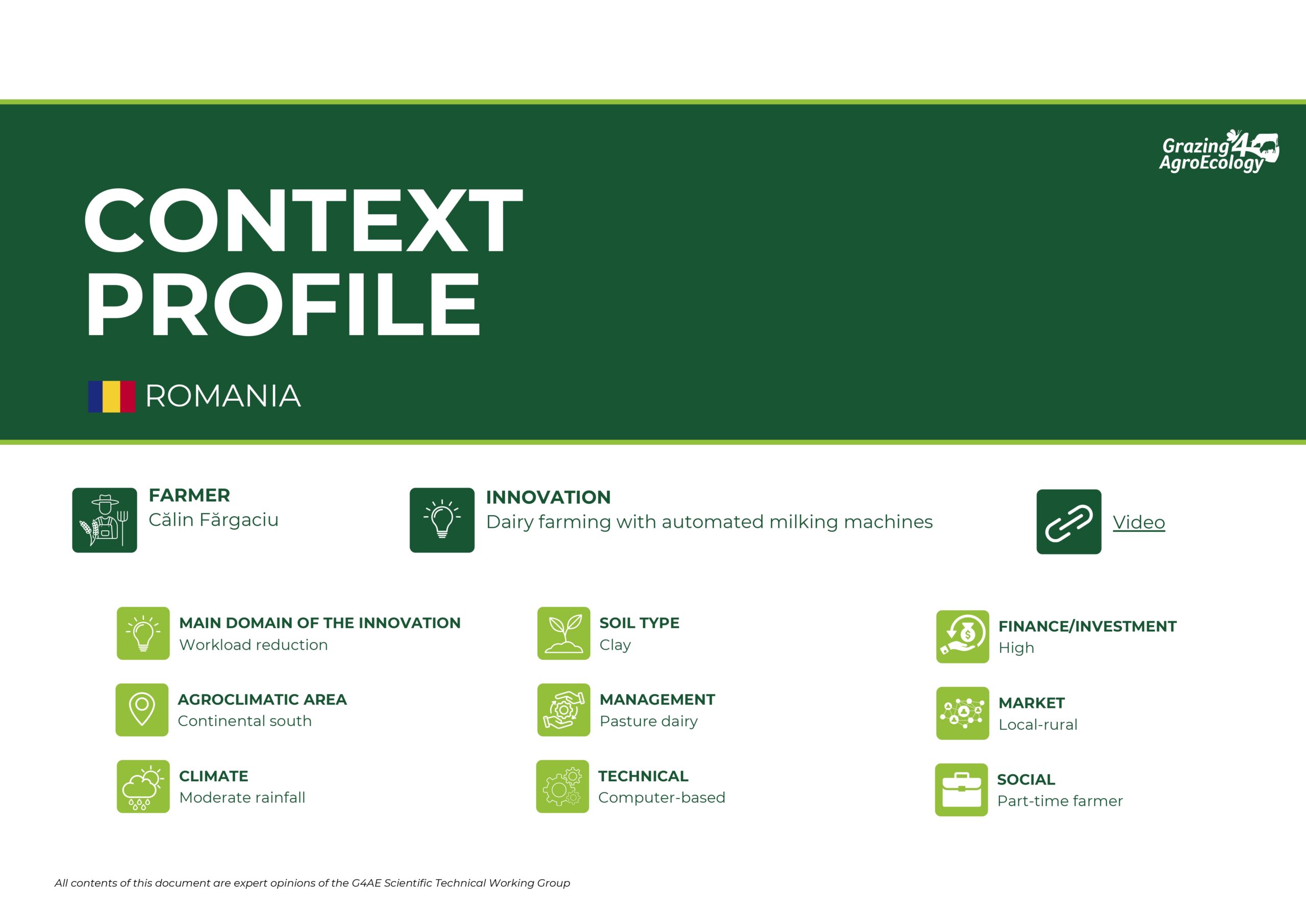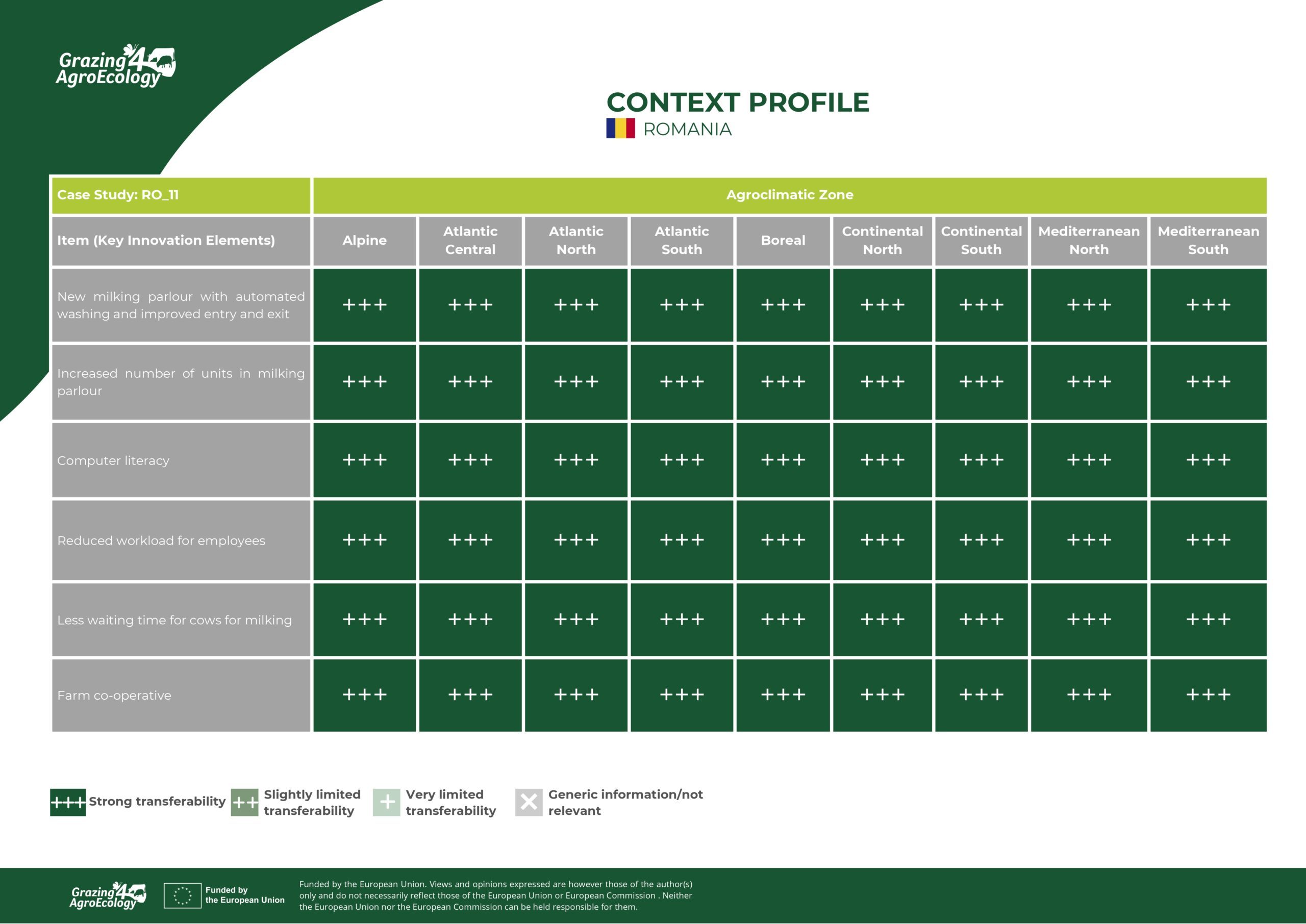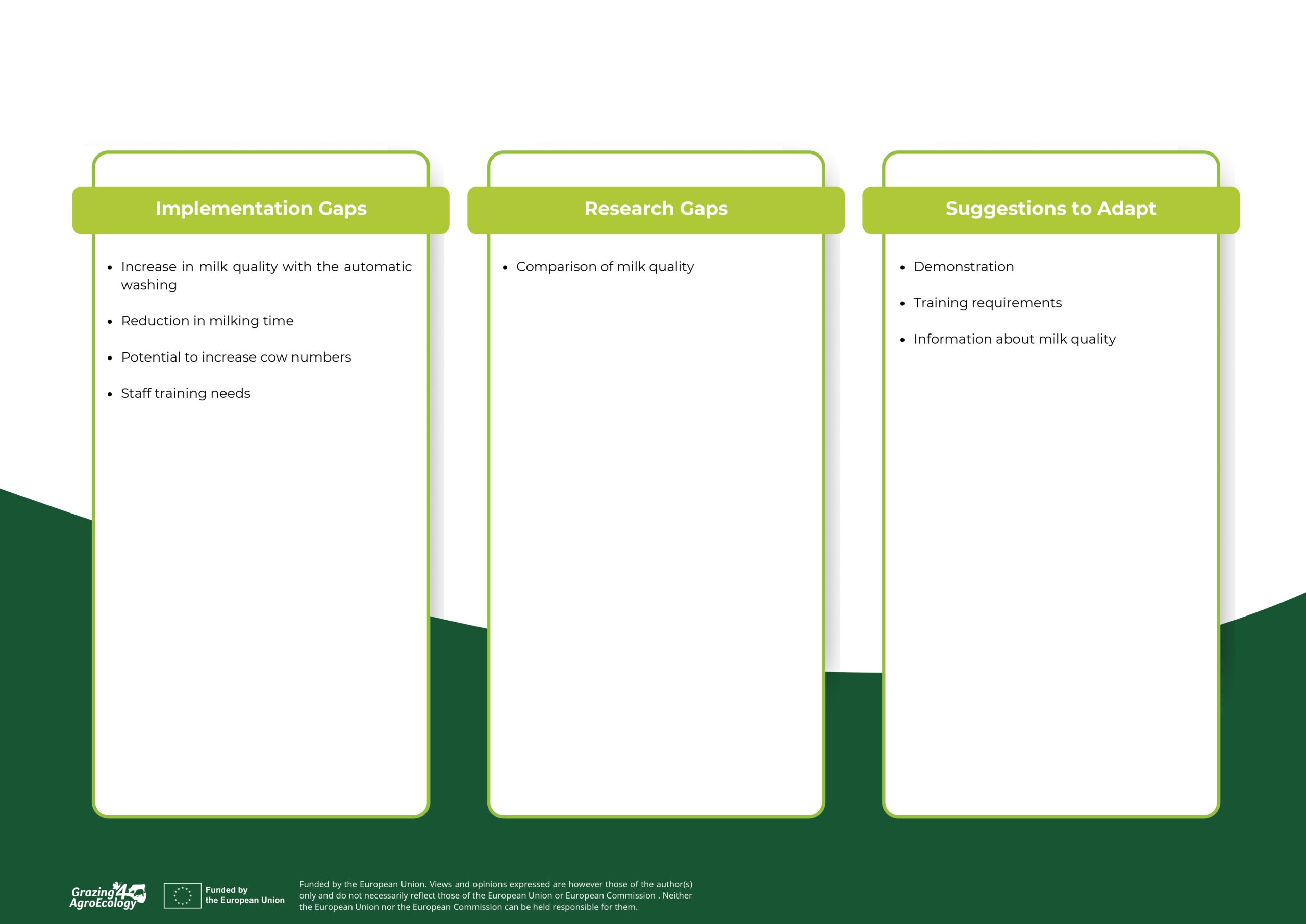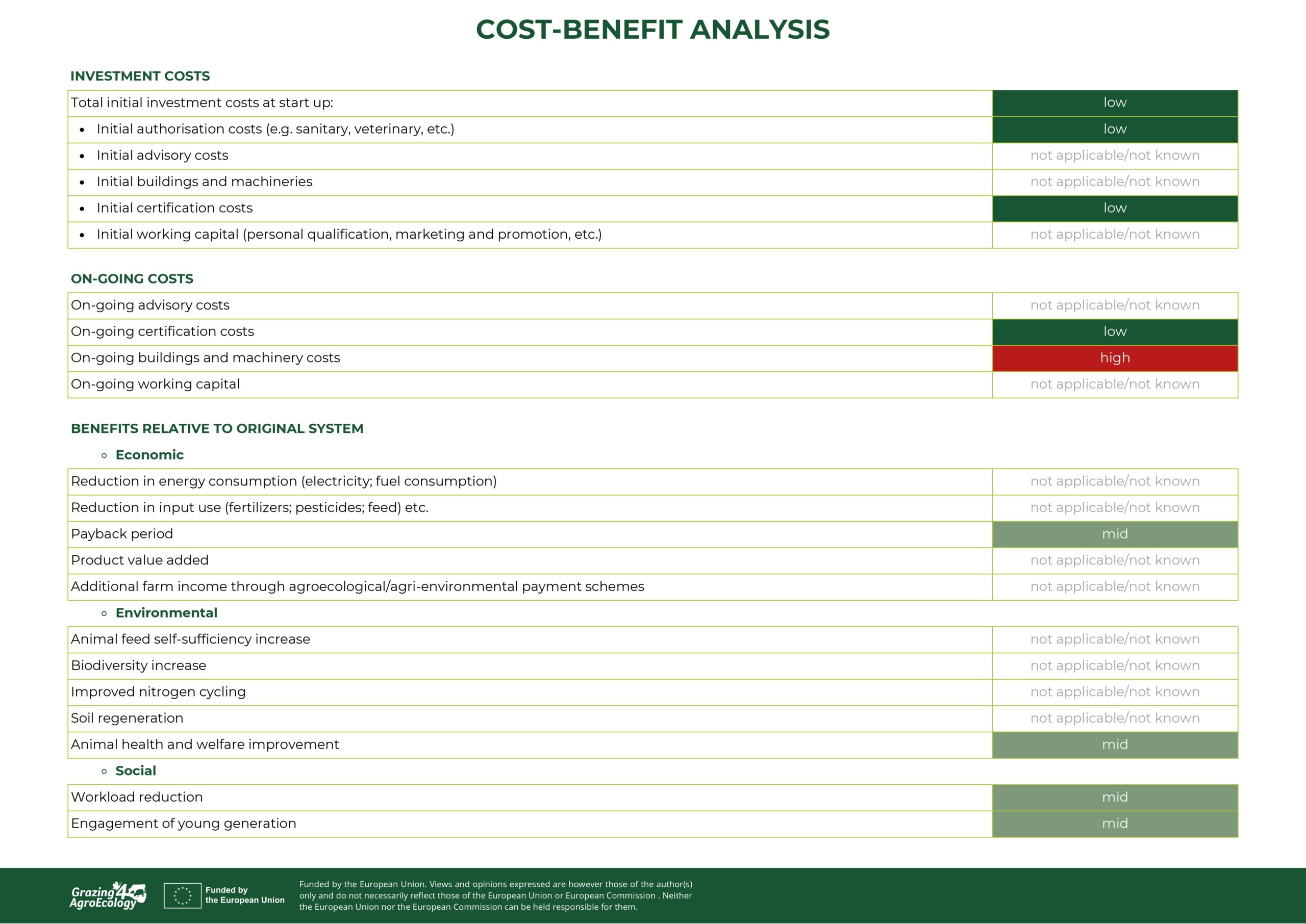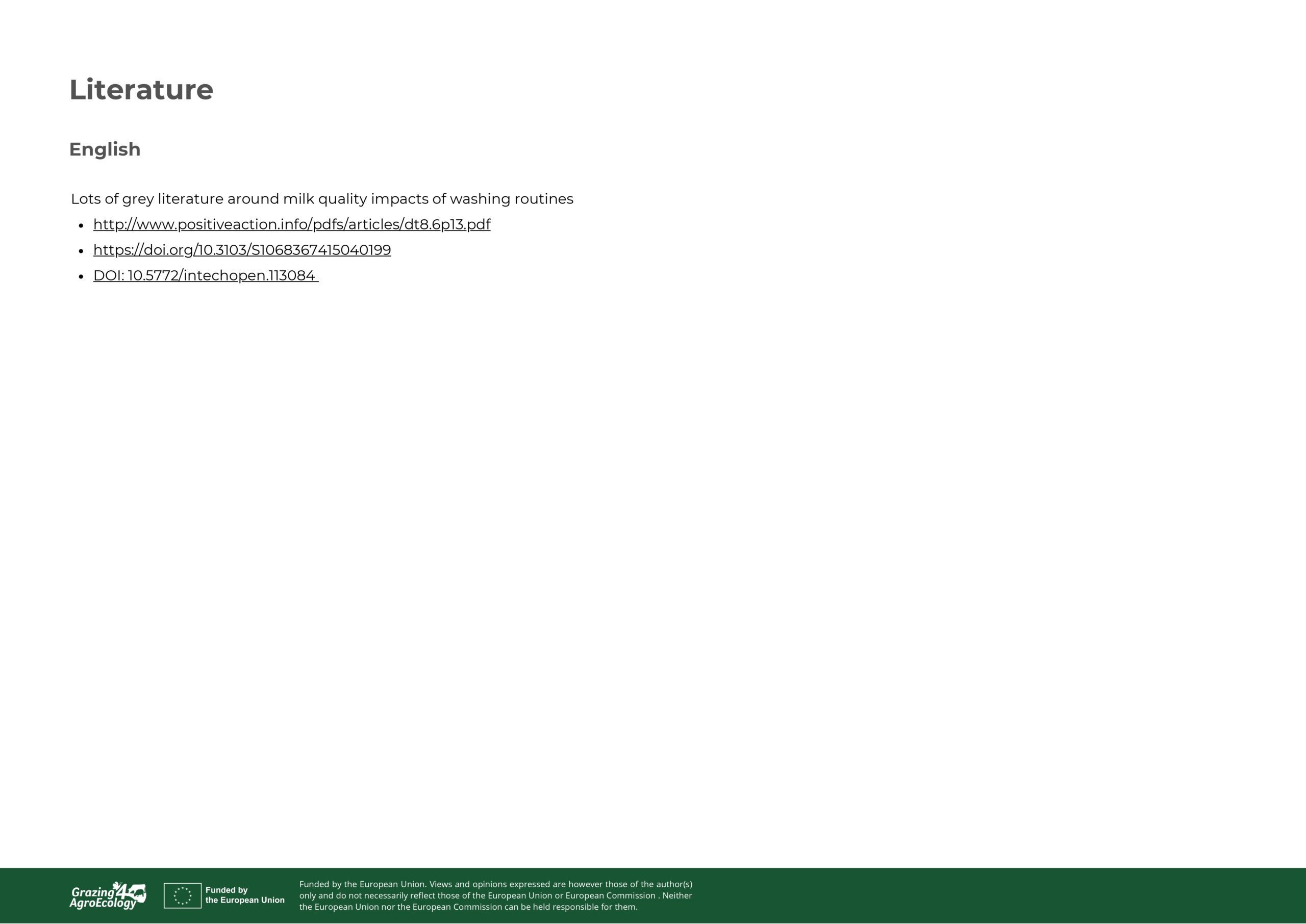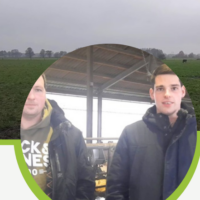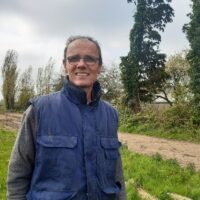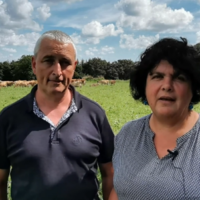Dairy Farming with Milking Parlors in Cluj County
Description
Practice abstract
The dairy family farms from Romania face multiple challenges in maintaining efficiency, finding labour force and meeting hygiene standards to avoid milk contamination. In addition, the case study family farm, located in Săndulesti Commune near the Apuseni National Park, inherited the structure of an old farm, a remnant of the communist era, which was outdated and inefficient. The farm is part of the Someş Aries Agricultural Cooperative, which is a Romanian cooperative made up of approximately 60 farmers from five counties. The main challenges are the farmers giving up, and the main reason would be the lack of labor. Some farmers have noticed this danger and have invested in new technologies, such as milking parlors. The 50 hectares pasture of the farm allows grazing from the end of May till the 1st of October and is situated on a limestone massif, experiencing variations in the fertile soil layer thus affecting the production of the grass
As a local innovation, the farmer introduced a milking parlour equipped with an automated washing system and an entry-exit system for animals, allowing for free stabling for the 80 heads of Baltata Romaneasca breed. The motivations of the farmer were to reduce the milking time, for animal welfare, to reduce the working time for employees, with the same salary, to motivate them to continue working on the farm, to reduce personnel costs by decreasing work intensity and duration, to improve the working conditions for the employed staff and to improve compliance with hygiene and sanitary standards. This system efficiently transfers milk directly to a cooler tank, significantly reducing milking time and labour costs with 50%. The quality of the milk has increased due to the automatic washing, a fact proven by the monthly analyses. Milking time has been cut in half, the staff does not need special training because the milking principle is the standard one. The potential for increasing the number of cows is directly proportional to the number of milking stations.
Due to the system’s efficiency, the farmer is going to extend the number of milking stations from 7 to 10, providing a comfortable and manageable workflow at a cost of €2k per station. Other results obtained from the innovation are: enhanced data collection and analysis for better herd management and increased overall farm profitability with 20%.
This innovation is particularly suitable for small to medium-sized family farms looking to modernise their dairy operations without overwhelming investment. Key factors for successful adoption include availability of initial capital for investment, openness to technological integration, and a minimum herd size to ensure return on investment.
Context profil
Additional information
| Main domain of innovation | |
|---|---|
| Agroclimatic area | |
| Climate | |
| Soil Type | |
| Management | Pasture dairy |
| Technical | Computer-based |
| Finance/investment | High |
| Market | Local-rural |
| Social | Part-time farmer |
| Country | |
| Language |

